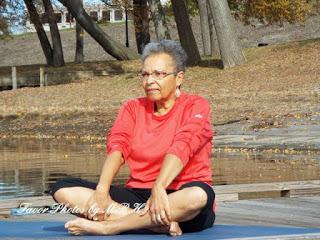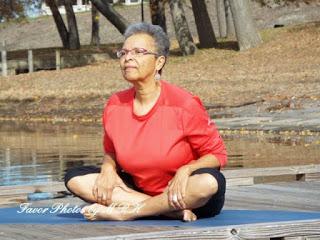by Beth
Plain of Air by Rene Magritte
This is part 5 in my series on the chakras. The last post focused on Manipura (Solar Plexus) chakra, and how we sense, feel and recognize our personal power, authenticity, and self-definition. This post will explore Anahata (Heart) chakra.The literal meaning of anahata is “un-struck” (unhurt, unbeaten). Anahata is said to be located in the center of the chest and related to the thymus gland. This organ is part of the immune system and the endocrine system. It produces T cells responsible for fighting off disease, and can be adversely affected by stress. The element associated with the Heart chakra is air.
In her book, Anatomy of the Spirit, Carolyn Myss writes:
“The fourth chakra is the central powerhouse of the human energy system. The middle chakra, it mediates between the body and spirit and determines their health and strength.”
Two issues we need to address in working with this chakra are love and relationships with ourselves and with others. As you might imagine these are central life issues that ask us to develop an inner emotional steadiness and calm from which to act consciously with appropriate boundaries, loving kindness, forgiveness and compassion. Not always an easy task, especially when the body has suffered second chakra trauma.
Stephen Levine discusses that point in his book, Healing Into Life and Death. In working with one woman who had suffered sexual assault at an early age, he made the connection between the Heart and Sacral chakras—what he calls the spiritual upper heart and the heart of the womb, the lower heart. He wrote:
“Clearly many women’s upper hearts had become inaccessible when their lower hearts had closed due to abuse and frightful mishandling.”
This is certainly applicable to men and to those who place their gender identity at any point on the rainbow of human expression as well.
For those of who have not suffered this type of second chakra trauma, working with heart energy can still be a complicated journey. Boundary, trust, and intimacy issues often get in the way of achieving clarity, balance, and healing. For many years, I experienced a palpable inner discomfort when my teachers led our classes through guided meditations on opening the heart. I would almost always see my heart as a cave with the entrance covered by a heavy wooden door. I had enough self-awareness at the time to know that I was protecting my heart from years of being disappointed, feeling ignored, and being ‘othered.’ Now, after more self-awareness work, I am more open to meditations on the heart, and if an invitation is not offered to protect my heart before opening the door, I give myself permission to do that.
I learned about the wisdom of protecting the heart before opening it during a weekend training at the Himalayan Institute in Pennsylvania with Shari Fredrickson. In small working groups, we were to prepare a short sequence on working with heart energy. The focus of most of the groups, including mine, was heart-opening postures like Ustrasana and Matsyasana. Shari, suggested we consider beginning with a protective posture for the heart before offering a heart opening practice. The light bulb went off in my head. Lesson learned.
We can gain clarity around our success or lack of success in working with heart energy by noticing how we react or respond to situations we face in our lives.For example:- If our perception of a situation is wrong, wrong action likely follows.
- If our perception is correct but we have doubt or fear, we may take no action or wrong action.
- If our perception is correct and we are clear in our understanding, right action will likely result even if the outcome is not what we expected or desired.
Balancing and healing heart energy is, like all self-awareness practices, a lifelong journey. In Eastern Body, Western Mind, Anodea Judith’s list of healing practices for the fourth chakra, includes the suggestion to “Work with the arms – reaching out, taking in.”Here is one of my favorite ways to do that while honoring Shari Fredrickson’s advice.
Dynamic Cobra (Bhujangasana)
This is also a recommended practice for the Sacral chakra. I’ve made a few variations for Anahata chakra.
1. Come to the floor on your hands and knees with your knees hips-width apart (or wider if that is more comfortable) and your arms shoulders-width apart and outstretched.
2. Exhale as you sit back onto your heels in Child’s pose (Balasana), to generate a feeling of safety, security, and protection. Take several breaths here.
3. When you feel ready, inhale, move through Hands and Knees position to lower yourself into your comfortable version of a straight-armed Cobra. Take a few breaths here if you are comfortable.
4. When ready, exhale, push yourself up to Hands and Knees and sit back into Child’s pose.
5. Pick a pace and rhythm that is comfortable for your body as you move through the flow.
6. Repeat at your chosen pace for a minute or more.
7. Rest in Child’s pose.
If you need a more accessible practice, try Kundalini Spinal Flexes in a chair:
1. Sit comfortably in your chair with your hands on your thighs.
2. Exhale as you round your spine and back with your chest sunken, dropping your chin to your chest. Take several breaths here if you are comfortable.


4. Repeat at your chosen pace for a minute or more.
5. To finish, inhale and hold your breath in on the forward flex for a second or two.
6. Exhale as you round your back and spine. Hold the breath out for a second or two.
7. Inhale to center, and rest.
“What a revolutionary proposition to realize that your heart-brokenness turns out to be the key to your willingness to remember what it takes to be a human being.” — Stephen Jenkinson
Beth's self-awareness newsletter is published six times a year. It features informative, inspiring and entertaining tips for finding clarity, contentment, and resilience in a complicated world. For more information and to sign up for the newsletter go to www.bethgibbs.com.


